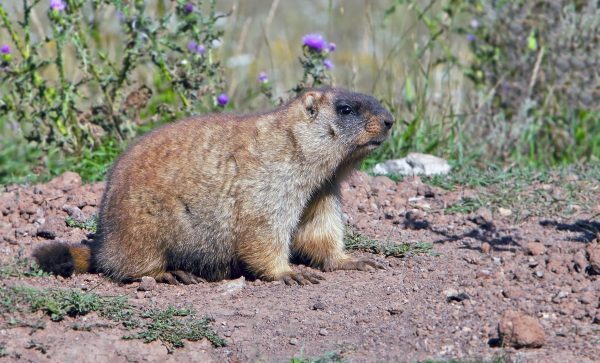Many species go by more than one name, while others strongly resemble one another, but couldn’t be more different. As for woodchucks and groundhogs, a cloud of confusion has lingered over the species for many eager students out there. To clear up this cloud of misconception, continue reading to learn once and for all, what a groundhog and a woodchuck have in common.
Groundhogs and Woodchucks are……
the Same Species!
A groundhog is a woodchuck, and a woodchuck is a groundhog. Humor aside, the answer to the frequently asked question, “is a groundhog the same animal as a woodchuck?” is yes. The word “woodchuck” is simply a nickname for groundhog.
Physical Description
Groundhogs can be found all over Indiana. They are the largest members of the Sciuridae family, which is includes medium-sized rodents like squirrels, chipmunks, and gophers. Adults are an average of 16 to 20 inches long, and weigh between 5 to 12 pounds.
They have brownish tan fur, sharp claws, and long tails, usually 6 inches in length. In the wild, they can live up to 10 years, but generally have lifespans that average between 3 and 6 years. As herbivores, groundhogs can eat roughly one-third of their body weight in vegetation each day; however, they are known to eat insects at times.
Habitat
Groundhogs are commonly referred to as an edge species because they tend to loiter around transitional areas where woods meet well-vegetated fields or meadows. They are also diurnal, meaning they are active during the day. Their daily activities mostly involve digging complex burrow systems underground. This is what can make them a nuisance animal for property owners.
Their digging can be quite destructive to residential and commercial lawns, making them quite to nuisance to many. Prime target areas for groundhogs are areas with good condition dry soil. This type of soil makes the burrowing process much easier for them. For this reason, it is likely to find groundhog burrows near fence lines, hedges, and aligned trees.


